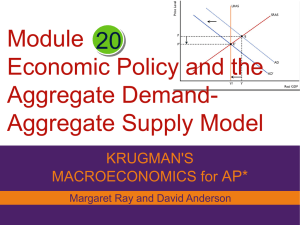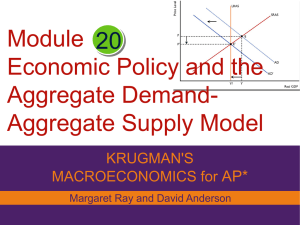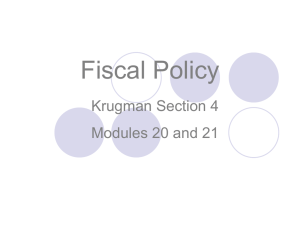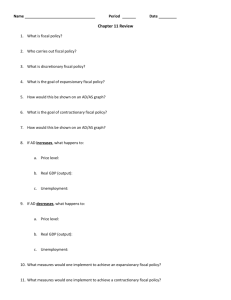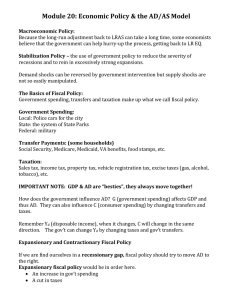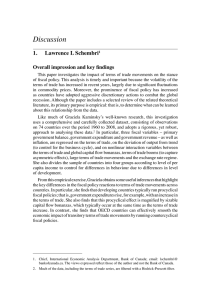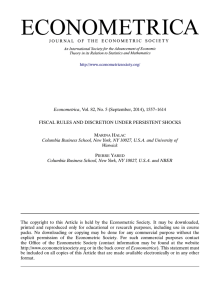Module Economic Policy and the Aggregate Demand
advertisement
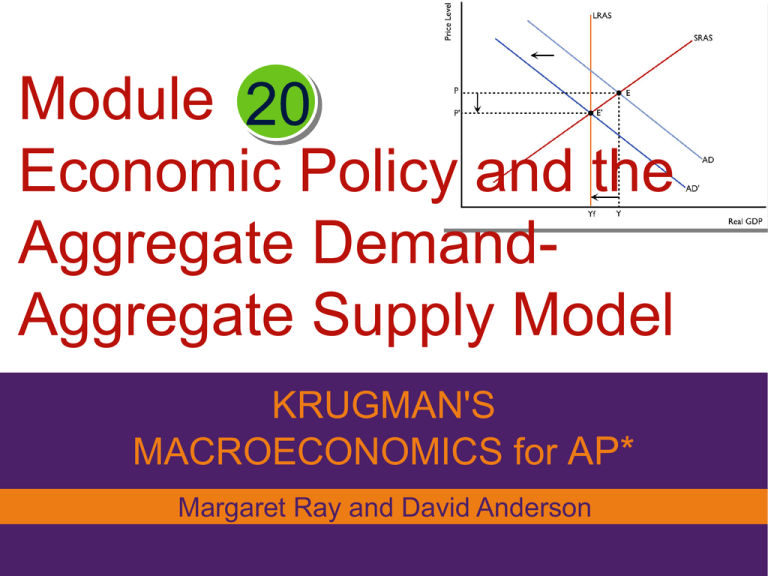
Module 20 Economic Policy and the Aggregate DemandAggregate Supply Model KRUGMAN'S MACROECONOMICS for AP* odel Margaret Ray and David Anderson What you will learn in this Module: • How the AD-AS model is used to formulate macroeconomic policy • The rationale for stabilization policy • Why fiscal policy is an important tool for managing economic fluctuations • Which policies constitute expansionary fiscal policy and which constitute contractionary fiscal policy Macroeconomic Policy •Self-correction? •Most economists agree that in the long-run the economy will self correct, but also agree with John Maynard Keynes, “In the long-run we are all dead” •Most economist recommend the use of fiscal policy (stabilization policy) to get the economy back to potential output Policy in the Face of Demand Shocks Demand Shocks Why are they bad? Should policymakers counteract? Negative demand shocks cause unemployment to rise Positive demand shocks cause higher levels of inflation Responding to Supply Shocks •Negative supply shocks present policy dilemmas • If AD is increased to counter unemployment, price levels rise • If AD is decreased to counter inflation, unemployment increases Fiscal Policy: The Basics Although fiscal policy in the U.S. plays a smaller role than in other countries, changes can have significant impact Taxes, Government Purchases of Goods and Services, Transfers, and Borrowing Taxes, Government Purchases of Goods and Services, Transfers, and Borrowing The Government Budget and Total Spending GDP = C + I + G + X – M • G is a direct component of AD so any changes lead to a change in AD and GDP The effect of taxes and transfers •Taxes and transfer payments affect disposable income and therefore C Effects on Investment • Taxes on business profits affect investment decisions and can change I Expansionary and Contractionary Fiscal Policy • Expansionary Fiscal Policy • increase G • decrease T • increase transfers Expansionary and Contractionary Fiscal Policy • Contractionary Fiscal Policy • decrease G • increase T • decrease transfers A Cautionary Note: Lags in Fiscal Policy Time lags • Recognition lag-it takes time to collect and gather data about the economy • Decision lag-it takes more time to develop spending and tax plans • Implementation lag-it takes time for the money to actually be spent Lags make decision making more difficult

